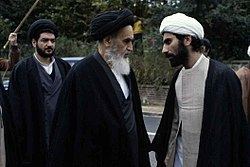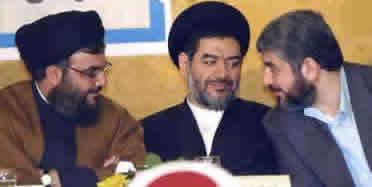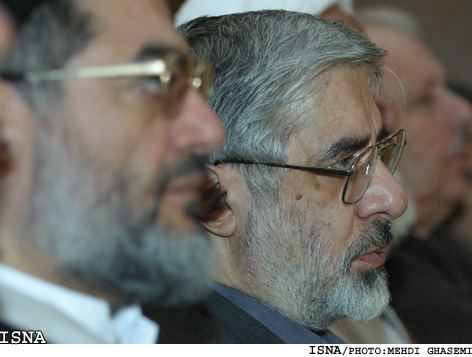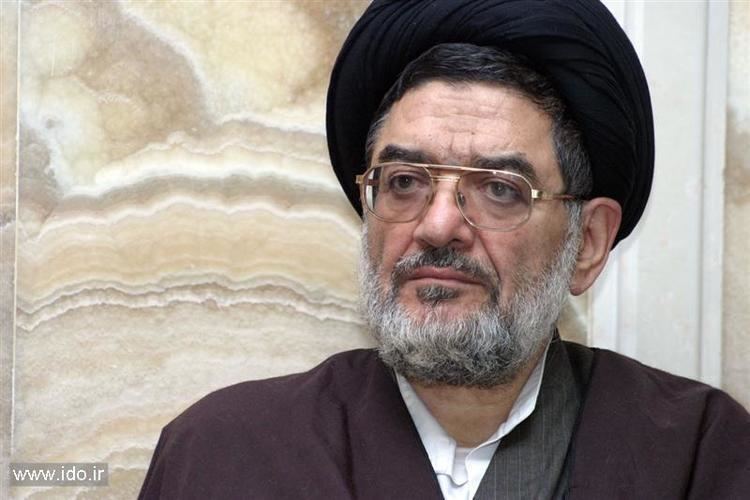Name Ali Mohtashamipur | ||
 | ||
Party Association of Combatant Clerics | ||
Similar Ali Khamenei, Mir Hossein Mousavi, Ali Akbar Nategh Nouri Nationality Iranian Death 7 June 2021 (aged 73) Tehran, Iran Relatives Fakhri Mohtashamipour Alma mater Alavi Institute, Qom Seminary, Hawza Najaf Minister of the Interior In office (28 October 1985 – 29 August 1989) President Ali Khamenei Prime Minister Mir-Hossein Mousavi Preceded by Ali Akbar Nategh-Nouri Succeeded by Abdollah Nouri Member of the Islamic Consultative Assembly In office (28 May 2000 – 28 May 2004) Constituency Tehran, Rey, Shemiranat and Eslamshahr Majority 717,076 (24.46%) Member of the Islamic Consultative Assembly In office (18 February 1989 – 28 May 1992) Constituency Tehran, Rey, Shemiranat and Eslamshahr Majority 225,767 (34.1%) Ambassador of Iran to Syria In office (1982–1986) President Ali Khamenei Prime Minister Mir-Hossein Mousavi Preceded by Ali Motazed Succeeded by Mohammad Hassan Akhtari | ||
Iran Cleric Who Founded Hezbollah Dies Of V-19
Ali Akbar Mohtashamipour or Mohtashami (Persian: سید علیاکبر محتشمیپور) was a Shia cleric who was active in the 1979 Iranian Revolution and later became interior minister of the Islamic Republic of Iran. He was "seen as a founder of the Hezbollah movement in Lebanon" and one of the "radical ... elements, advocating the export of the revolution," in the Iranian clerical hierarchy.
Contents

In an assassination attempt targeting Mohtashami, he lost his right hand when he was opening a book loaded with explosives.

Biography

Mohtashemi studied in the holy city of Najaf Iraq, where he spent considerable time with his mentor the Ayatollah Khomeini. He also accompanied Khomeini in the exile period in both Iraq and France. He cofounded an armed group in the 1970s with Mohammad Montazeri, son of Ayatollah Hossein Ali Montazeri, in Lebanon and Syria, aiming at assisting liberation movements in Muslim countries.

Following the revolution he served as Iran's ambassador to Syria from 1982 to 1986. He later became Iran's minister of interior. While ambassador to Syria, he is thought to have played a "pivotal role" in the creation of the Lebanese radical Shia organization Hezbollah, working "within the framework of the Department for Islamic Liberation Movements run by the Iranian Pasdaran." Mohtashami "actively supervised" Hezbollah's creation, merging into it existing radical Shi'ite movements: the Lebanese al-Dawa; the Association of Muslim Students; Al Amal al Islamiyya. In 1986 his "close supervision" of Hezbollah was cut short when the Office of Islamic Liberation was reassigned to Iran's ministry of foreign affairs. He was also described as making "liberal" use of the diplomatic pouch as Ambassador, bringing in "crates" of material from Iran. He was remained among radical hard line parties even when he choose as the minister in the government of Musavi.

In 1989 the new Iranian president Akbar Hashemi Rafsanjani ousted Mohtashami from the Lebanon desk of the Iranian ministry of foreign affairs, replacing him with Rafsanjani's brother Mahmud Hashemi. This was seen as an indication of Iran's downgrading of its support for Hezbollah and for a revolutionary foreign policy in general.
In August 1991 he regained some of his influence when he became chairman of the defense committee of the Majlis (parliament) of Iran.
More controversially, Mohtashami is thought
to have played an active role, with the Pasdaran and Syrian military intelligence, in the supervision of Hezbollah's suicide bomb attacks against the American embassy in Beirut in April 1983, the American and French contingents of the MNF in October 1983 and the American embassy annex in September 1984.
and to have been instrumental in the killing of Lt. Col. William R. Higgins, the American Chief of the United Nations Truce Supervision Organization's (UNTSO) observer group in Lebanon who was taken hostage on 17 February 1988 by Lebanese pro-Iranian Shia radicals. The killing of Higgins is said to have come "from orders issued by Iranian radicals, most notably Mohtashemi," in an effort to prevent "improvement in the U.S.–Iranian relationship."
While Mohtashami was a strong opponent of Western influence in the Muslim world and of the existence of the state of Israel, he was also a supporter and advisor of reformist Iranian president Mohammad Khatami who was famous for championing of free expression and civil rights. Mohtashemi was in the Western news again in 2000, not as a hardline radical but for refusing to appear in court in Iran after his pro-reform newspaper, Bayan, was banned.
Behzad Nabavi and Ali Akbar Mohtashami were among those who prevented by the Guardian council from taking part in the elections of Majlis.
Attempted assassination
In 1984, after the Beirut bombings, Mohtashami received a parcel containing a book on Shia holy places when he was serving as Iranian ambassador to Damascus. As he opened the package it detonated, blowing off his hand and severely wounding him. Mohtashami was medevaced to Europe and survived the blast to continue his work. The identity of the perpetrators of the attack is unknown.
Death
He passed away on June 7, 2021, at the age of 74, at Khatam ol-Anbia Hospital in Tehran, due to complications related to COVID-19.
